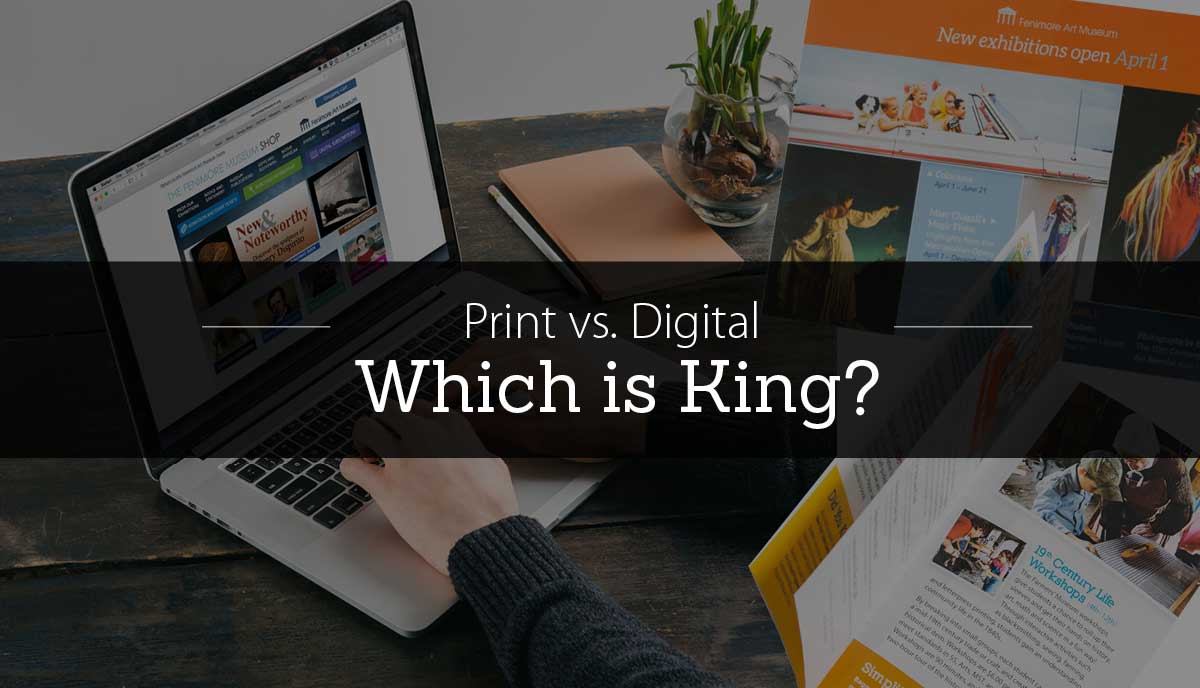Print versus digital seems to be the ongoing debate in nearly every creative field, including photography, art, and book, magazine, and newspaper publishing—and advertising is no exception. With studies demonstrating that adults spend 47.1% of their daily media-consumption time—that’s 5 hours and 46 minutes—with digital media and only 3.5% (26 minutes) with print, it’s easy to see why advertisers are jumping to ditch traditional channels in favor of digital, social media, and mobile app ads.
But experts advise that it’s not whether advertisers should use print or digital, it’s how much they should use each channel. The shift shouldn’t be absolute—and the right balance between print and digital depends completely on your audience. There’s a perfect balance of print and digital advertising for each industry and company, and each medium has something they can offer.
There are clear advantages to digital. It’s less expensive, sophisticated behavioral targeting methods mean you can zero in yon your ideal customer, and analytics give advertisers the opportunity to test how their ad is performing—with print, the advertiser can only hypothesize. But research demonstrates that the key is to understand your audience; specific audience demographics are much more important than overall trends. Is your audience over 65? Are they primarily non-technical consumers? Or are they young techies whose first instinct is to “Google it”? All of these factors will affect your ideal advertising strategy.
Digital gets high points simply for frequency of use. An informal survey of daily train commuters conducted in 2013 revealed that for every one commuter reading a print newspaper or magazine, eight were engrossed in a laptop, smartphone, or tablet. The numbers are clear—Americans spend much more time engaging with digital media than they do with print media, and while print media may be confined to “leisure time,” digital media is encountered throughout work, school, and leisure time.
That last point, though, is important to think about. Digital media, and therefore, digital advertising, is more likely to be consumed while a user is distracted or multitasking, like at work or school. When consumers read print media, they are often much more engaged. Studies show that people often skim websites in under 15 seconds, long enough to get an “impression” of your ad (in the technical sense), but not long enough to absorb the information—and that website may be just one of many browser tabs open on their desktop. While consuming print, users are much more likely to be giving it their undivided attention.
Plus, digital advertising is so common now that our brains have all but tuned it out. Print advertising, on the other hand, stands out—a full-page magazine ad or a physical mailer is encountered rarely when compared with the hundreds of banner ads we consume daily. We must also remember that while digital advertising is fleeting, consumed for no more than the seconds or minutes a user spends on a website or mobile app, print has staying power. The same magazine could be saved in a home for months or passed along to other consumers, increasing the advertiser’s return on investment.
Here’s a handy guide:
The bottom line? No one formula fits all companies. Research is key, along with flexibility, monitoring, and a little creative thinking.



